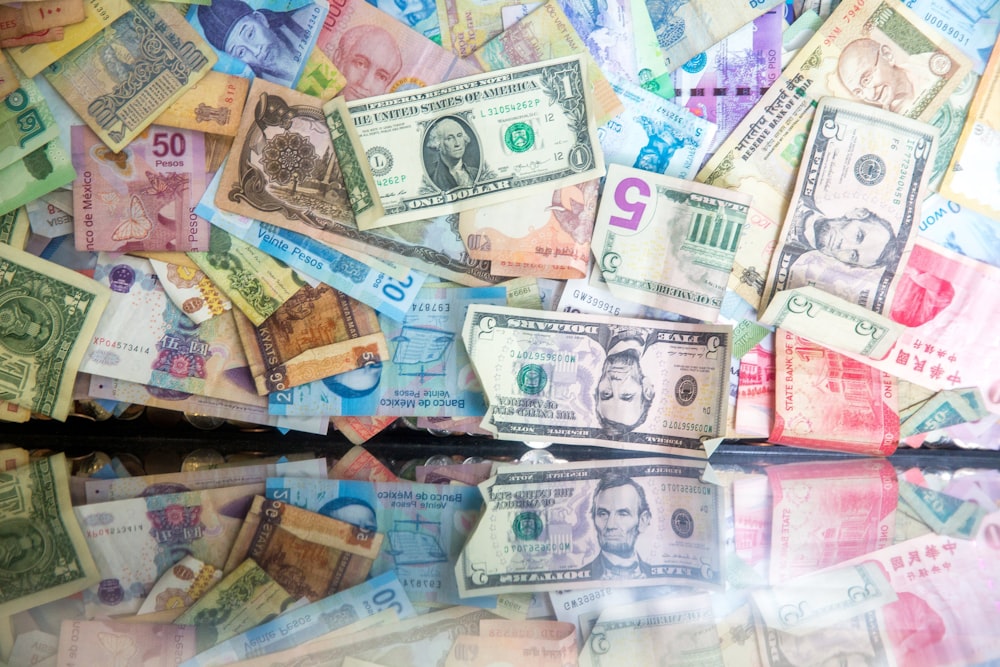USD/EUR Falls To Four-Year Lows As Fed Rate Cuts Loom
Image Source: Unsplash
As the probability of a rate cut climbed to 95% ahead of the Federal Reserve’s meeting on Wednesday, September 16, the euro climbed 0.8% to its highest level against the US dollar since September 2021.
Although the buck had initially steadied itself following the shock of President Trump’s reciprocal tariffs in April, USD/EUR has faced intense selling pressure in recent weeks as the president has repeatedly called for steep rate cuts to ease the strain on the US economy.
Markets expect the Fed to issue a 25-basis-point rate cut, but Trump has been a vocal critic of the Federal Reserve and its chair, Jerome Powell, and has repeatedly sought to instigate greater cuts.
Recently, Trump called on Powell to enact a “bigger cut” to help benchmark interest rates and ease the strain on the US housing market. But what impact would these scenarios have on the dollar at a time when it’s showing fresh signs of weakness against the euro?
Pricing in the Impact of Cuts
So, what could the Federal Reserve’s cuts look like? JPMorgan analysts have suggested that the most likely outcome of the Fed’s meeting is a 25-basis-point rate cut accompanied by a dovish commentary surrounding the state of the US economy.
The scenario, according to the analysts, would see the S&P 500 gain around 1% in the immediate aftermath of the announcement but may form the basis for a ‘sell-the-news’ event, which may see stocks fall further in the following weeks.
If the Fed’s commentary is more hawkish following the cut, then the S&P 500 could fall further as investors lose confidence in further rate cuts in 2025.
Should a 25-basis-point cut be accompanied by a hawkish commentary from the Fed, it could help to snap the dollar out of its steep downward trajectory against the euro that’s been in place since January.
While lower interest rates stimulate markets by encouraging borrowing, they generally have a weakening effect on currencies because investors see weaker levels of interest on their holdings.
This means that the Fed’s tone surrounding its rate cut, in this case, is likely to be more important than the cut itself.
What if We See a Bigger Cut?
The prospect that President Trump gets his wish and sees a larger 50-basis-point cut may not necessarily trigger greater strength in US markets, according to JPMorgan's global head of market intelligence, Andrew Tyler.
Tyler suggested that a larger cut could see a 1.5% swing either way in the S&P 500, but there may be a risk that markets view the more drastic measure as a sign that the Fed is concerned about the health of the US labor market, which may lead to more investors selling.
With recent data suggesting that the US created 911,000 fewer jobs than initial estimates suggested in the year through March, the overall health of labor markets is becoming a key concern for investors, with major implications for the forex landscape.
Dollar ‘Overvalued’
According to Bank of America’s September global fund manager survey, the proportion of investors who believed that the dollar was overvalued rose to a three-month high this month, with 49% of respondents believing the dollar to be too high, up from 44% in August.
This perception comes despite the fact that the dollar has slipped 9% since the beginning of Q2 2025.
The survey also showed that many investors remain underweight the dollar, with the expectation that the currency will underperform.
Although this could be a catalyst for the buck to slip lower in the coming weeks, the euro is also contending with a loss of investor sentiment stemming from the Fitch agency’s decision to downgrade France’s credit rating last week.
Factors like political instability and disagreements surrounding the handling of public finances have caused the US rating agency to downgrade France on its ability to pay back debts from AA- to A+, which represents the European nation’s lowest level on record at a major credit rating agency.
What’s Next for USD/EUR?
With expectations high for rate cuts in the United States amid economic uncertainty and a Trump administration that’s hell-bent on reopening the door to borrowing, it’s highly likely that the dollar will continue on its path towards falling weaker against the euro.
However, France’s well-documented economic challenges illustrate that some European nations aren’t faring much better on the other side of the Atlantic. This could pave the way for other currency pairs to secure higher gains against the two weakening currencies.
The Federal Reserve’s decision on interest rates, along with the tone of its commentary, will likely decide the short-term direction of USD/EUR. Looking further afield, it appears that a weaker dollar will be too alluring for policymakers to chart a resurgence.
More By This Author:
Li Auto’s Challenge To Tesla Could Solidify China’s Newfound Renewable Energy Pedigree
China’s Road To Becoming A Clean Energy Superpower Clears Following EU Summit And U.S. Dialbacks
Walmart’s ‘Nvidia Of Retail’ Status Makes It The Perfect Stock To Navigate Tariff Uncertainty




